Cannondale Habit
Wheel Size: S-XL: 29’’; XS: 27.5”
Travel: 130 mm rear / 140 mm front
Geometry Highlights:
- Sizes offered: XS, SM, MD, LG, XL
- Headtube angle: 65.5°
- Seat tube angle: 77.5°
- Reach: 480 mm (size Large)
- Chainstay length: 440 mm (size Large)
Frame Material: Aluminum and carbon fiber versions available
Price: Complete Bikes: $2,300 to $7,000 USD
Blister’s Measured Weight (Habit Carbon 1, size Large, tubeless): 29.55 lb / 13.4 kg
Test Duration: 3 months
Test Location: Gunnison & Crested Butte, Colorado; Colorado Front Range; Eastern Utah
Reviewer: 5’10.5”, 160 lb / 179 cm, 72.5 kg

Intro
Right in the middle of their mountain bike lineup, Cannondale’s Habit Trail bike is designed to handle a mix of everything, with Cannondale’s new Scalpel as their dedicated XC race bike and their high-pivot Jekyll filling the role of their downhill-capable Enduro bike. The Habit first graced Cannondale’s lineup in 2015 with 27.5” wheels and was then reimagined a couple of years later with 29” wheels and the first-ever Horst-link suspension layout in Cannondale’s history.
The latest version of the Habit was introduced last spring with more minor changes, mostly some geometry updates to keep it in line with today’s geometry standards. We’ve now spent several months aboard the new bike, but before our on-trail impressions, let’s take a look at the design details of the Habit:
The Frame
Cannondale uses a traditional Horst-link, 4-bar suspension design on the Habit, producing 130 mm of rear-wheel travel paired with a 140 mm travel fork up front. The Habit is also available in a “LT” configuration, utilizing a longer-stroke shock to achieve 140 mm of rear wheel travel, and complements that with a 150 mm fork. Interestingly, the Habit also utilizes slightly different suspension pivot points for each size, designed to accommodate different size riders’ varying centers of gravity.
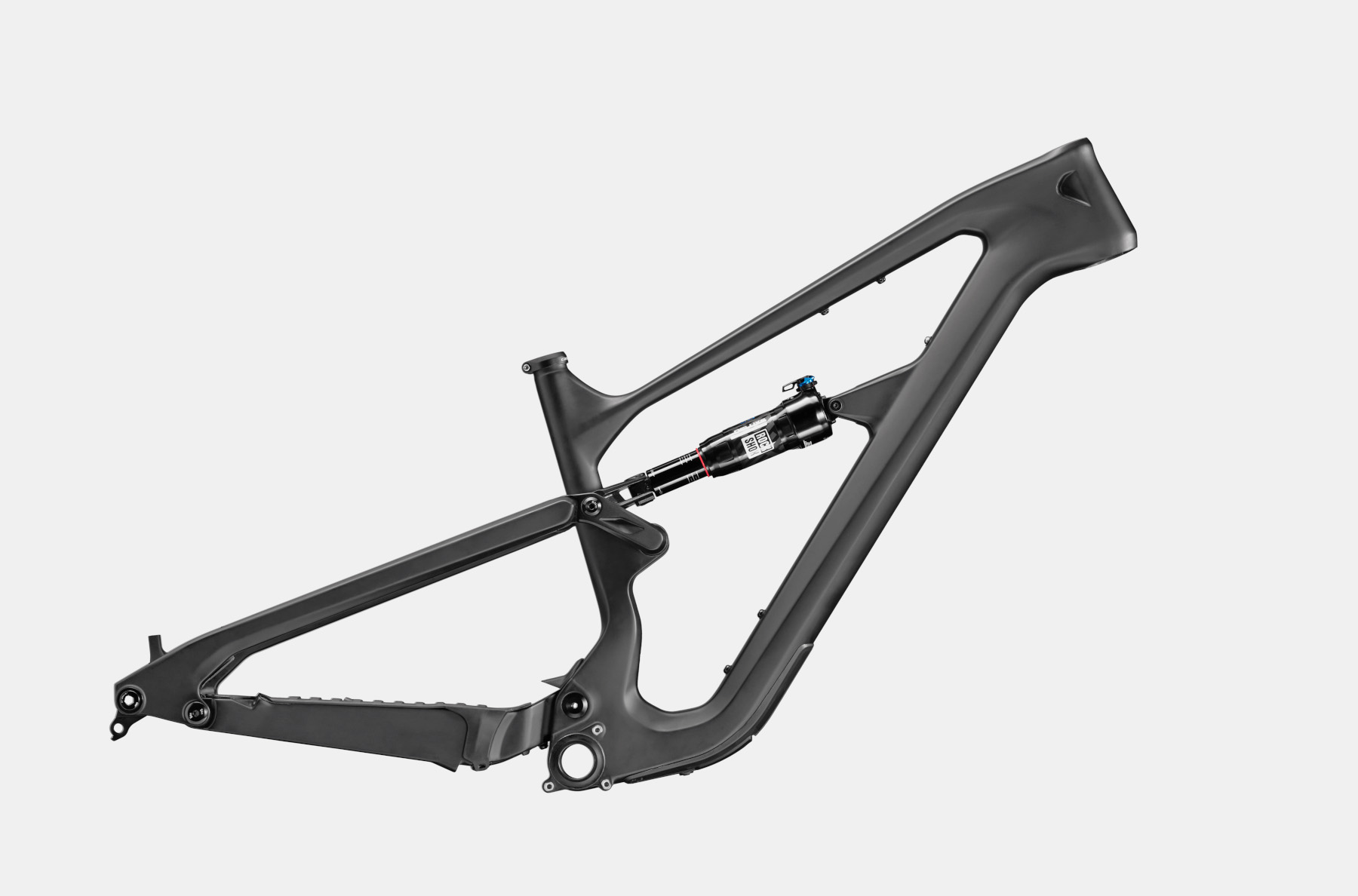
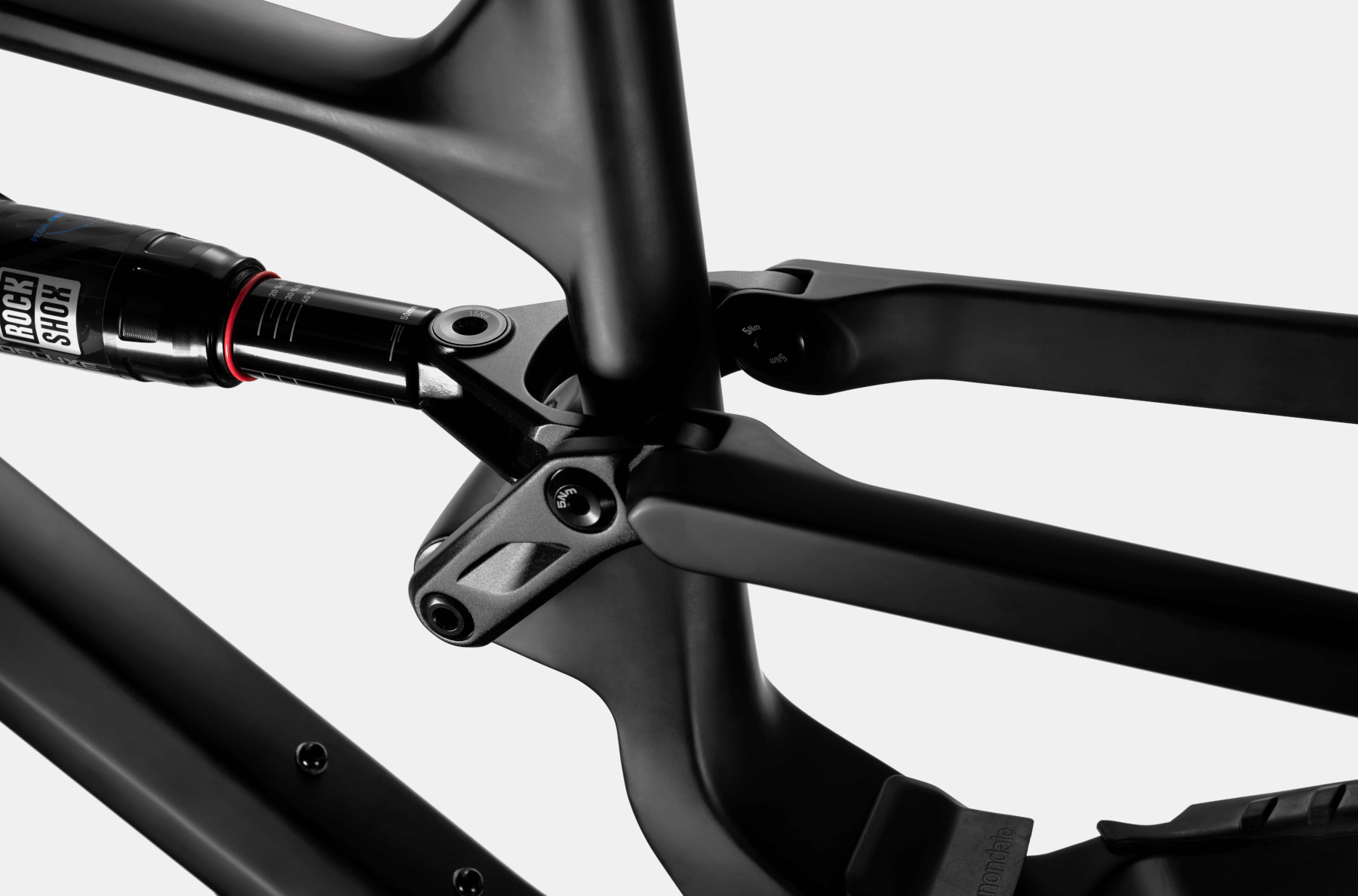
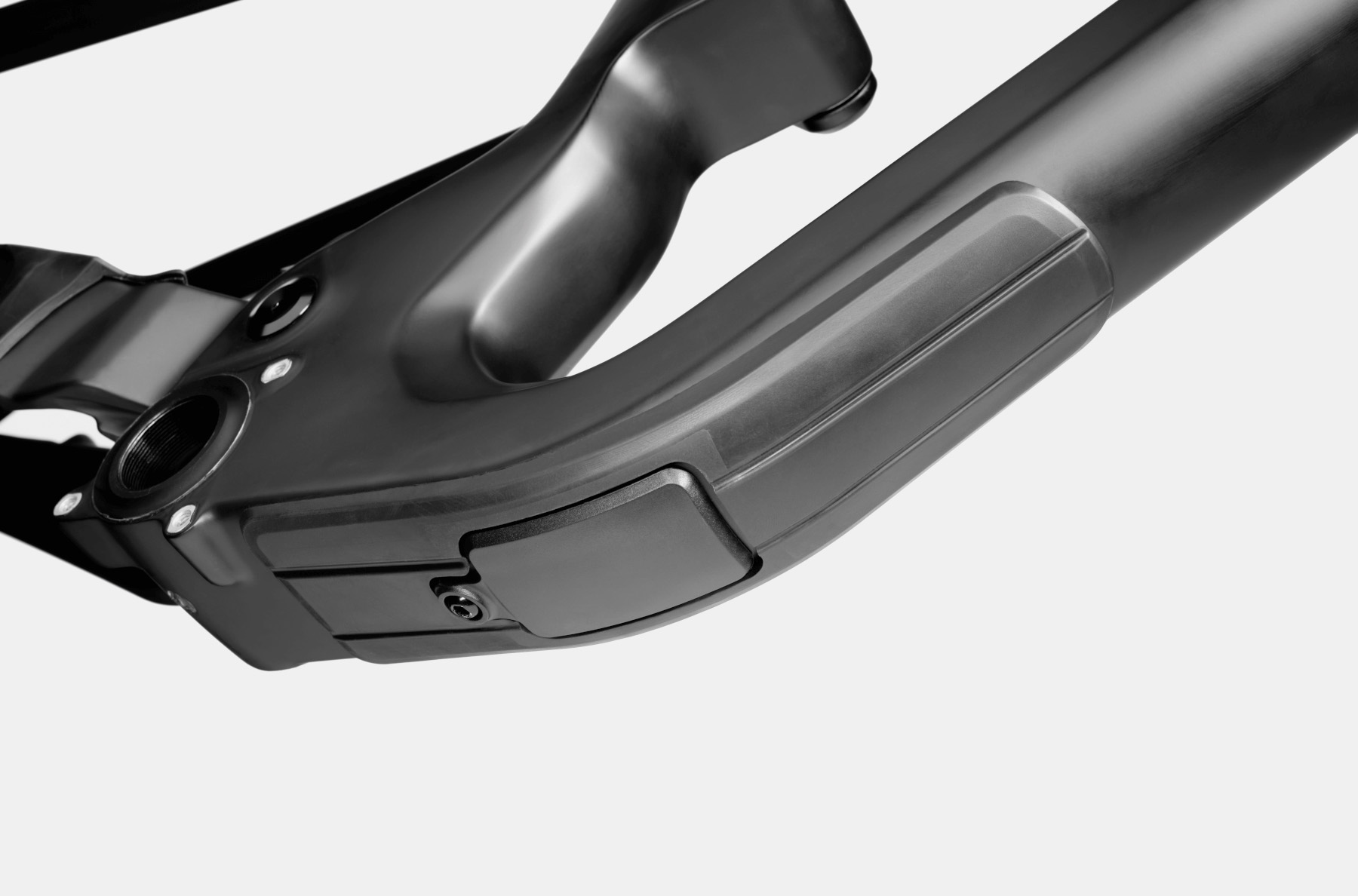
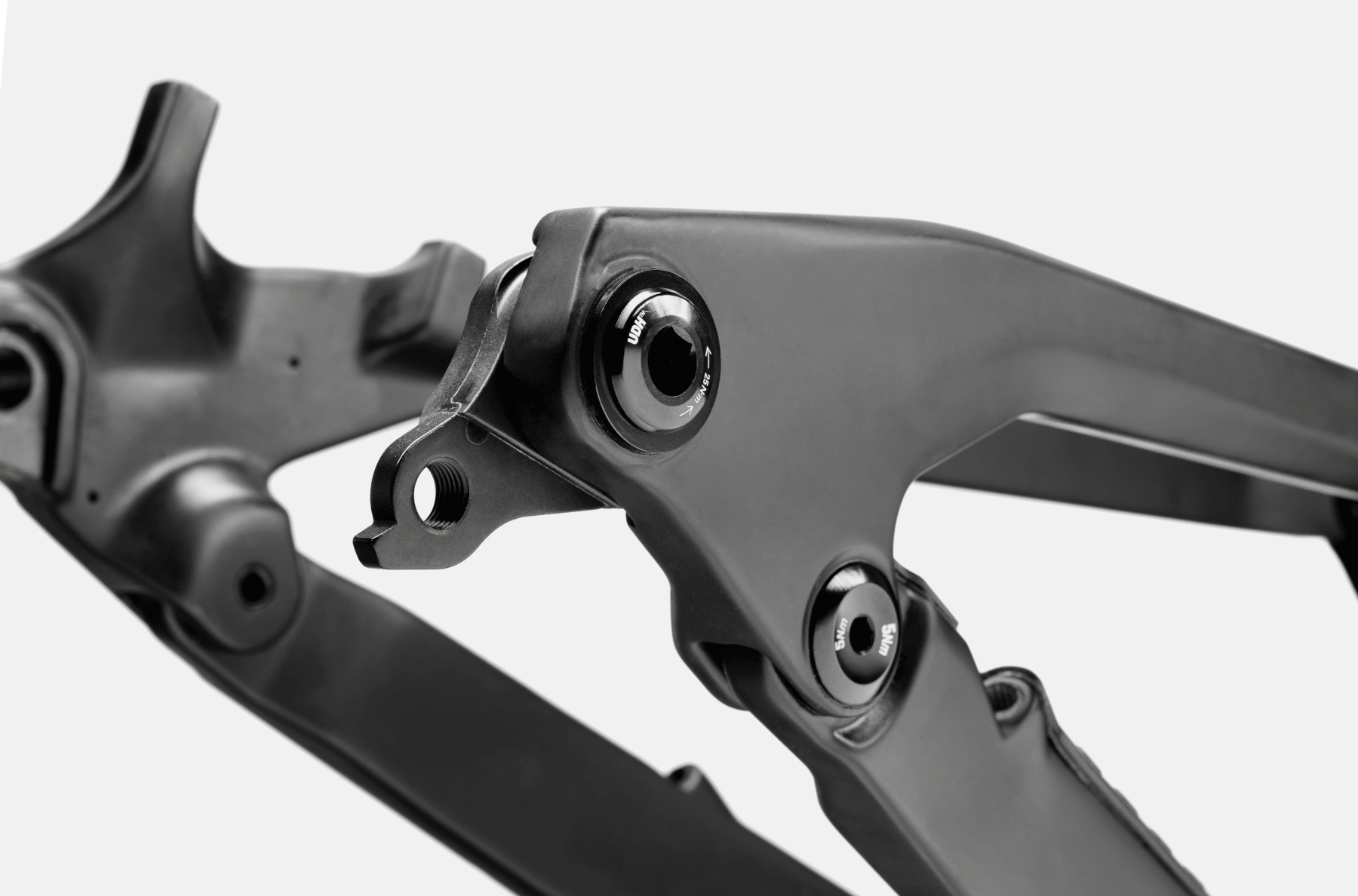
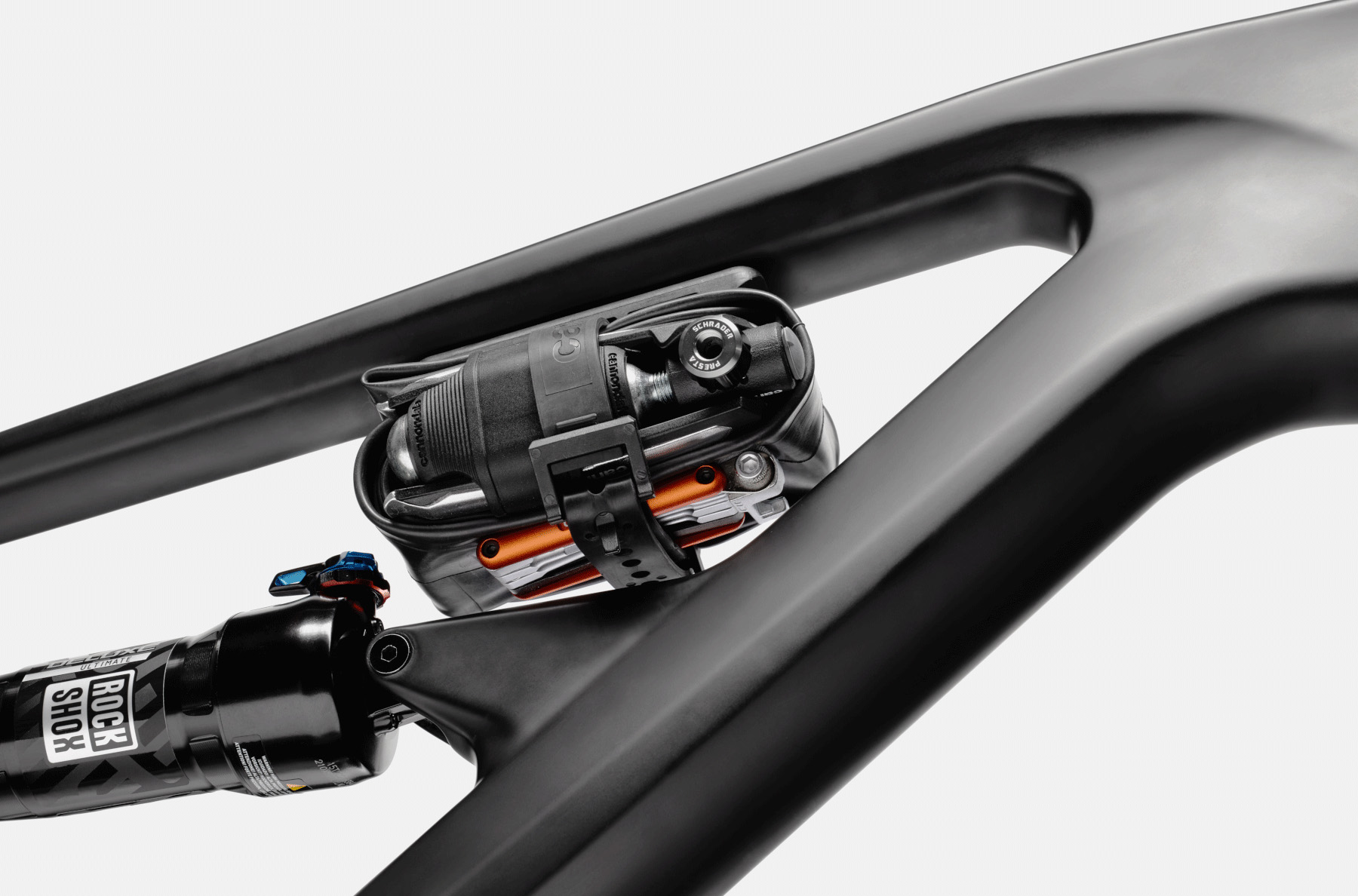
The Habit is available in either carbon or aluminum, and both frames feature rubber downtube protection, a threaded bottom bracket, and SRAM Universal Derailleur Hanger. All Habits have a mount for a water bottle cage on the inside of the front triangle, and carbon Habit frames also feature mounts under the forward portion of the top tube for mounting accessories such as Cannondale’s own StrapRack storage system. It’s also worth noting that the S-XL Habits have 29” wheels, while the XS Habit has 27.5” wheels.
Fit & Geometry
The latest Habit has thoroughly modern geometry, with its reach numbers having grown significantly over the previous Habit. The XS Habit kicks it off with a 405 mm reach, with each size growing by an even 25 mm; the XL Habit tops out at 515 mm. While these numbers don’t exactly jump off the page, the Habit does have slightly longer reach numbers compared to other Trail bikes with similar suspension travel. It has a pretty middle-of-the-park head tube angle at 65.5º for every size, complemented by a relatively steep 77.5º effective seat tube angle.
Another notable factor with the Habit is varying chainstay lengths in each size. The XS and Small sizes share a chainstay length of 434 mm, while the Medium bumps it up slightly to 435 mm. Then, the Large Habit sports moderate 440 mm chainstays, with the biggest XL size utilizing 445 mm ones.
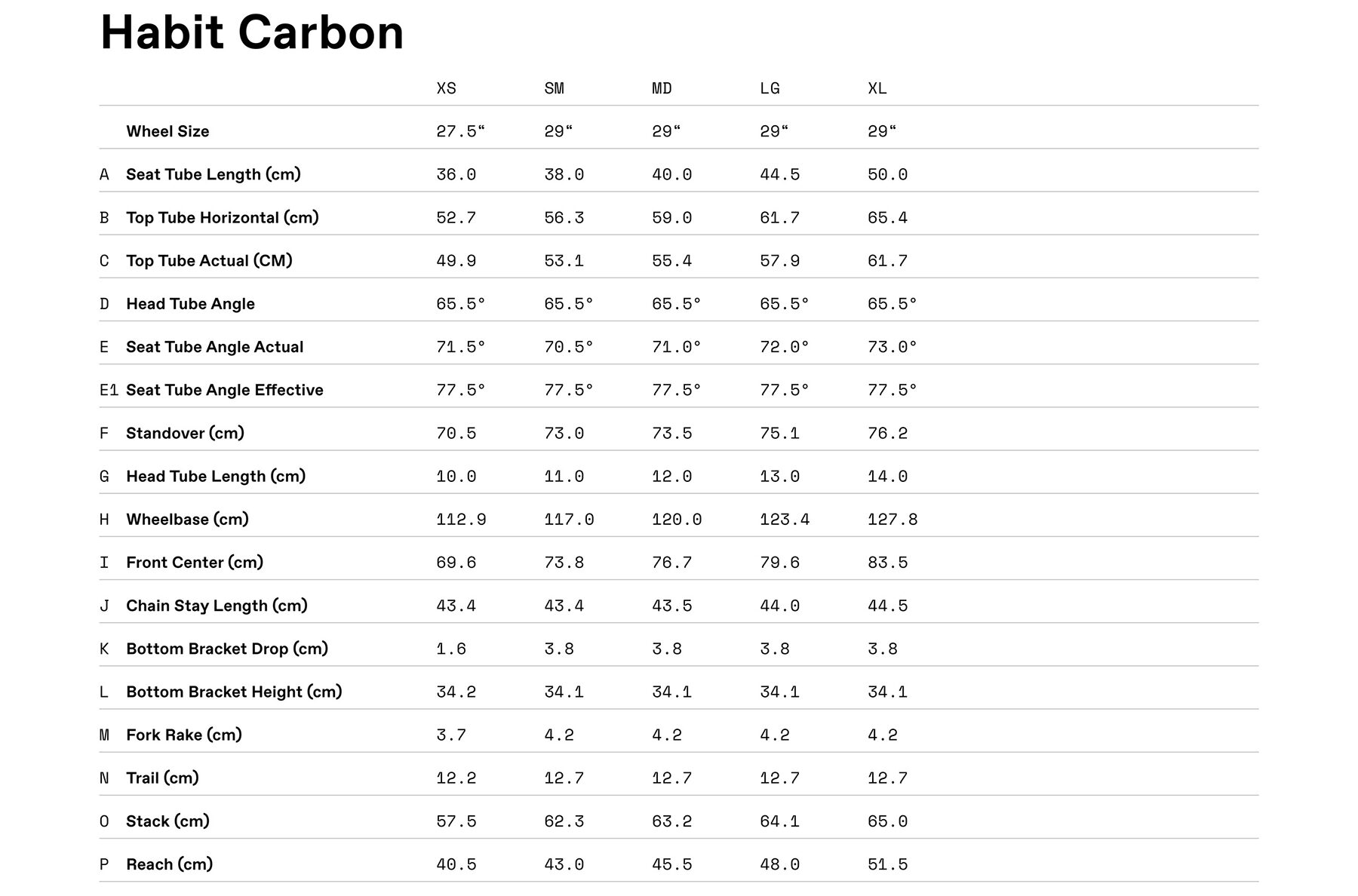
The Habit’s stack numbers are a bit tall, with our Large test bike sporting a 640 mm stack — a number you’d see on a longer-travel bike such as the Enduro-focused Santa Cruz Megatower. Apart from that, the Habit certainly fits in with its modern competition, with its geometry numbers skewing slightly on the longer end of the spectrum.
The Builds
Cannondale offers the “standard” Habit bike in 5 different build kits, and the Habit LT in 3 different kits. It’s worth noting that while the top-end Habit LTD leaves little to be desired in terms of high-end spec, there’s a pretty significant jump between the highest two build kits in both variations of the Habit, and the builds that Cannondale offers here are a bit more value-oriented than many of its competitors. Prices listed below are MSRP, though Cannondale has several models on sale at the time of writing.
Build kits are mostly well-rounded here, though it’s notable that Cannondale opted to put an inline shock on all trim levels for the standard Habit, where bikes in this category often get a piggyback shock (which the Habit LT does).
The rundown on the builds is below:
- Drivetrain: Shimano Deore
- Brakes: Shimano MT200 (w/ 180 mm rotors)
- Fork: RockShox Recon RL
- Shock: RockShox Deluxe Select
- Wheels: WTB STX i25 TCS
- Dropper Post: TranzX dropper, 130mm (XS-S), 150mm (M-XL)
- Drivetrain: SRAM NX Eagle
- Brakes: SRAM G2 R (w/ 180 mm rotors)
- Fork: RockShox Pike
- Shock: RockShox Deluxe Select+
- Wheels: Stan’s NoTubes Arch D
- Dropper Post: TranzX dropper, 130mm (XS-S), 150mm (M-XL)
- Drivetrain: Shimano XT/SLX
- Brakes: Shimano Deore 4-piston (w/ 180 mm rotors)
- Fork: RockShox Pike Select
- Shock: RockShox Deluxe Select+
- Wheels: Stan’s NoTubes Crest Arch MK4
- Dropper Post: Cannondale DownLow Dropper, 125mm (XS-S), 150mm (M), 170mm (L-XL)
- Drivetrain: SRAM GX Eagle
- Brakes: SRAM G2 R (w/ 180 mm rotors)
- Fork: RockShox Pike Select+
- Shock: RockShox Deluxe Select+
- Wheels: Stan’s NoTubes Arch MK4
- Dropper Post: Cannondale DownLow Dropper, 125mm (XS-S), 150mm (M-XL)
- Drivetrain: SRAM XO Eagle AXS Transmission
- Brakes: SRAM G2 RSC (w/ 180 mm rotors)
- Fork: RockShox Pike Ultimate
- Shock: RockShox Deluxe Ultimate
- Wheels: DT Swiss XMC 1501 Spline One Carbon
- Dropper Post: RockShox Reverb AXS, 125mm (XS-S), 150mm (M) 170mm (L-XL)
- Drivetrain: Shimano XT/SLX
- Brakes: Shimano Deore 4-piston (w/ 203 & 180 mm rotors)
- Fork: RockShox Lyrik
- Shock: RockShox Super Deluxe Select
- Wheels: WTB ST i30 TCS
- Dropper Post: Cannondale DownLow Dropper, 125mm (XS-S), 150mm (M), 170mm (L-XL)
- Drivetrain: SRAM GX Eagle
- Brakes: SRAM Code R (w/ 200 mm rotors)
- Fork: RockShox Lyrik Select+
- Shock: RockShox Super Deluxe Select+
- Wheels: WTB KOM Trail i30 TCS
- Dropper Post: Cannondale DownLow Dropper, 125mm (XS-S), 150mm (M), 170mm (L-XL)
- Drivetrain: SRAM XO Eagle AXS Transmission
- Brakes: SRAM G2 RSC (w/ 200 mm rotors)
- Fork: RockShox Lyrik Ultimate
- Shock: RockShox Super Deluxe Ultimate
- Wheels: DT Swiss EX1700 Spline
- Dropper Post: RockShox Reverb AXS, 125mm (XS-S), 150mm (M) 170mm (L-XL)
Now onto what this all means on the trail:
FULL REVIEW
Dylan Wood (5’10.5”, 160 lbs / 179 cm, 72.5 kg): I spent lots of time last fall as well as this spring on the Cannondale Habit, and I’m quite pleased with how Cannondale’s do-it-all Trail bike handles a variety of terrain, while also differentiating itself from its crowded class in a few key ways. Let’s get into it:
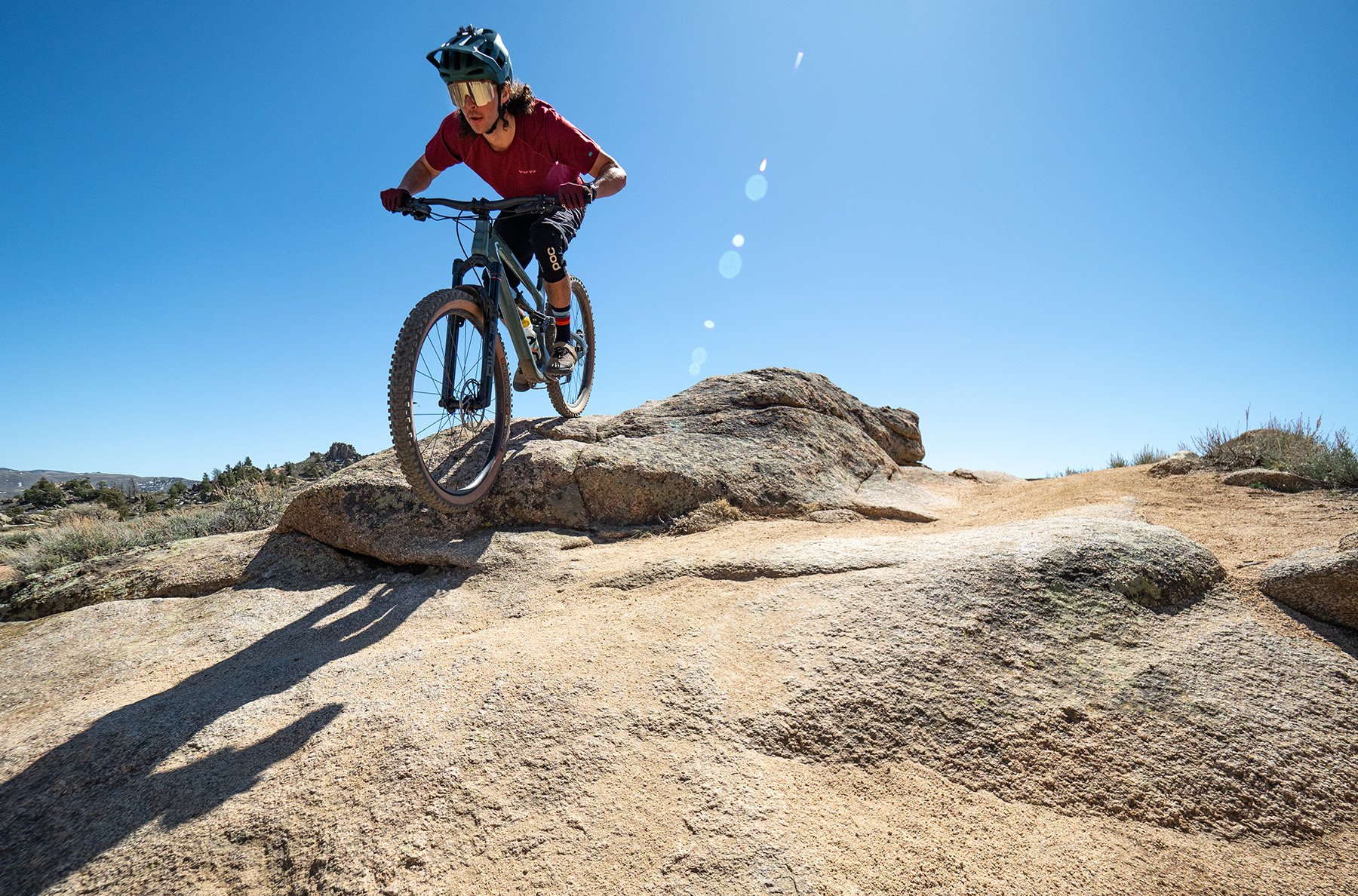
Fit & Sizing
I’m almost always riding size Large (or equivalent) mountain bikes, and the Large Habit provided the ideal fit for me. This shouldn’t come as a surprise; at 5’10.5” / 179 cm, I am right in the middle of Cannondale’s recommended sizing for the size Large Habit. I do my best to avoid looking at any geo charts before riding a new bike for the first time, and I will say that I was a little surprised to find that the Habit had a 480 mm reach for the size Large. Its 617 mm effective top tube length, which is brought about by an appropriately steep 77.5º seat tube angle, helps make the Habit feel a little smaller than its reach figure might suggest.
Overall, after adjusting the cockpit to my preferences, I found the seated pedaling position very comfortable and familiar, akin to several other bikes I’ve enjoyed many miles aboard. The seated pedaling position on the Habit was athletic yet comfortable for the long haul, allowing me to get over the front of the bike on steep climbs, but also didn’t demand that I ride hunched over on flatter trails.
Climbing
I was immediately impressed by the Habit’s uphill performance. At 29.55 lbs / 13.4 kg (size Large Habit Carbon 1, tubeless), the Habit is a relatively lightweight Trail bike without much mass holding it back from being able to accelerate uphill quickly. Additionally, the Habit’s suspension platform is effective at balancing efficiency and traction, with a slight edge toward being more efficient than average for its class. The decision to spec a 2.4” Maxxis Dissector up front is pretty standard, but the low-profile 2.4” Maxxis Rekon out back certainly got my attention. On the plus side, the Rekon is a very fast-rolling tire and aids in this bike’s efficiency. On the downside, it can be lacking in grip, especially on loose, rooty, and/or wet sections of trail.
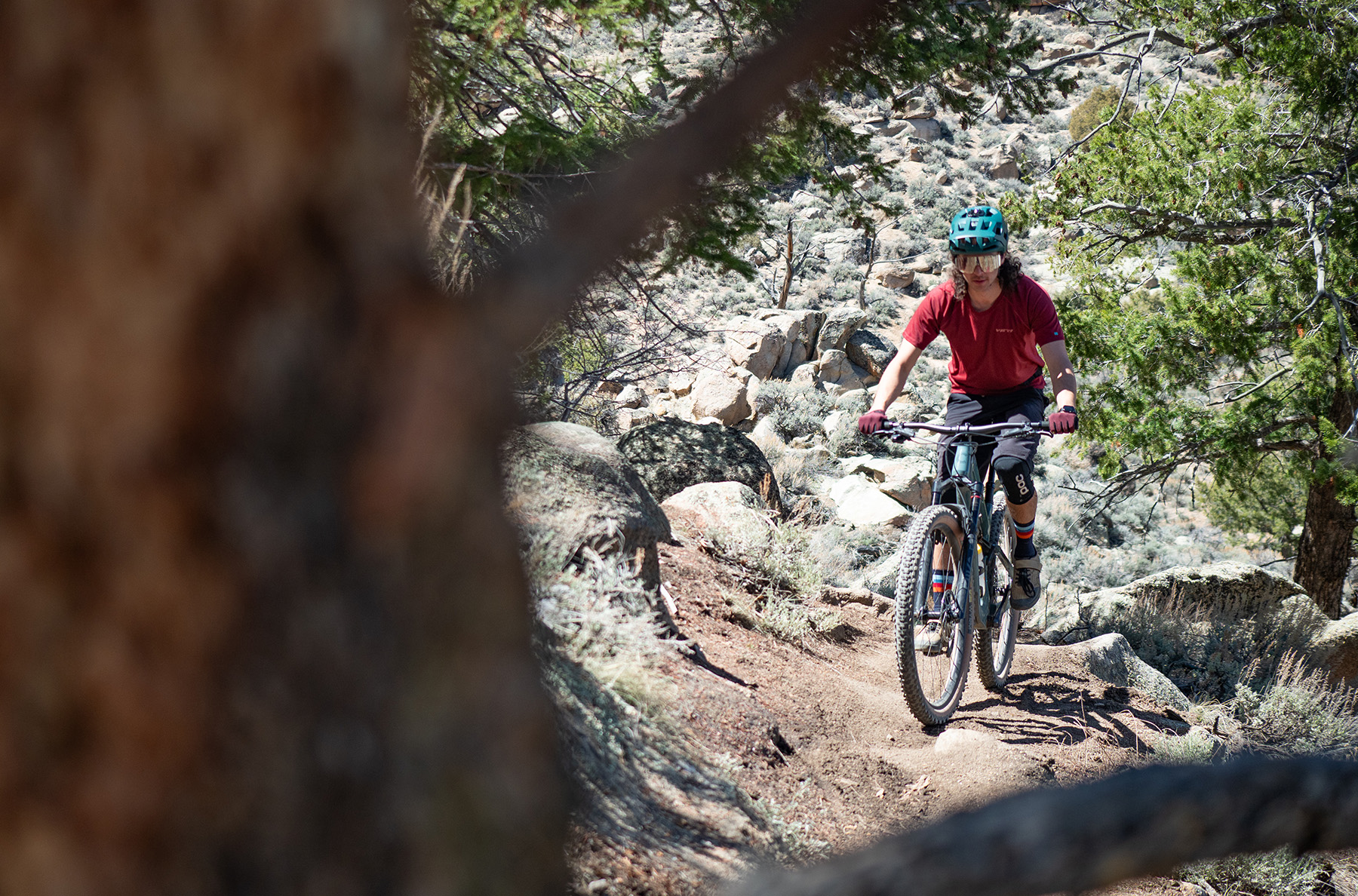
As I mentioned earlier, I was surprised to find that the Large Habit has a relatively long reach at 480 mm and a somewhat high stack height at 640 mm. Despite those roomy numbers, when climbing, I never found it too hard to keep weight over the front of this bike, and the Habit’s relatively steep 77.5º seat tube angle definitely helps mask its long reach. I did choose to slam the stem almost the entire way down the fork’s steer tube, leaving only a 5 mm spacer between the stem and headset. That helped to keep my weight over the front of the bike, yet I never found myself in discomfort due to feeling like I was hunched over too aggressively.
While I mostly enjoyed climbing trails that were smooth with moderate gradients on the Habit, it’s also a respectable technical climber. While it doesn’t have class-leading traction when climbing, it is quick and nimble, and the Habit responds predictably to shifts in rider weight when lifting and winching over obstacles. It isn’t the best at mashing up technical climbs when you’re mostly relying on power; the Habit has a tendency to lose traction in these instances due to the rear suspension not being quite active enough (the Rekon tire out back is also likely a factor). But this same trait makes the Habit an efficient climber on smoother trails, and I think the tradeoff will be worth it for many riders.
Descending
It wasn’t until I let gravity do the work that I began to understand how the Habit differentiates itself in the crowded market of ~130mm-travel Trail bikes. This bike is undeniably playful, agile, and snappy. It is eager to get airborne, with both a lightweight feel and lively suspension platform aiding in getting some separation between this bike and the ground below.
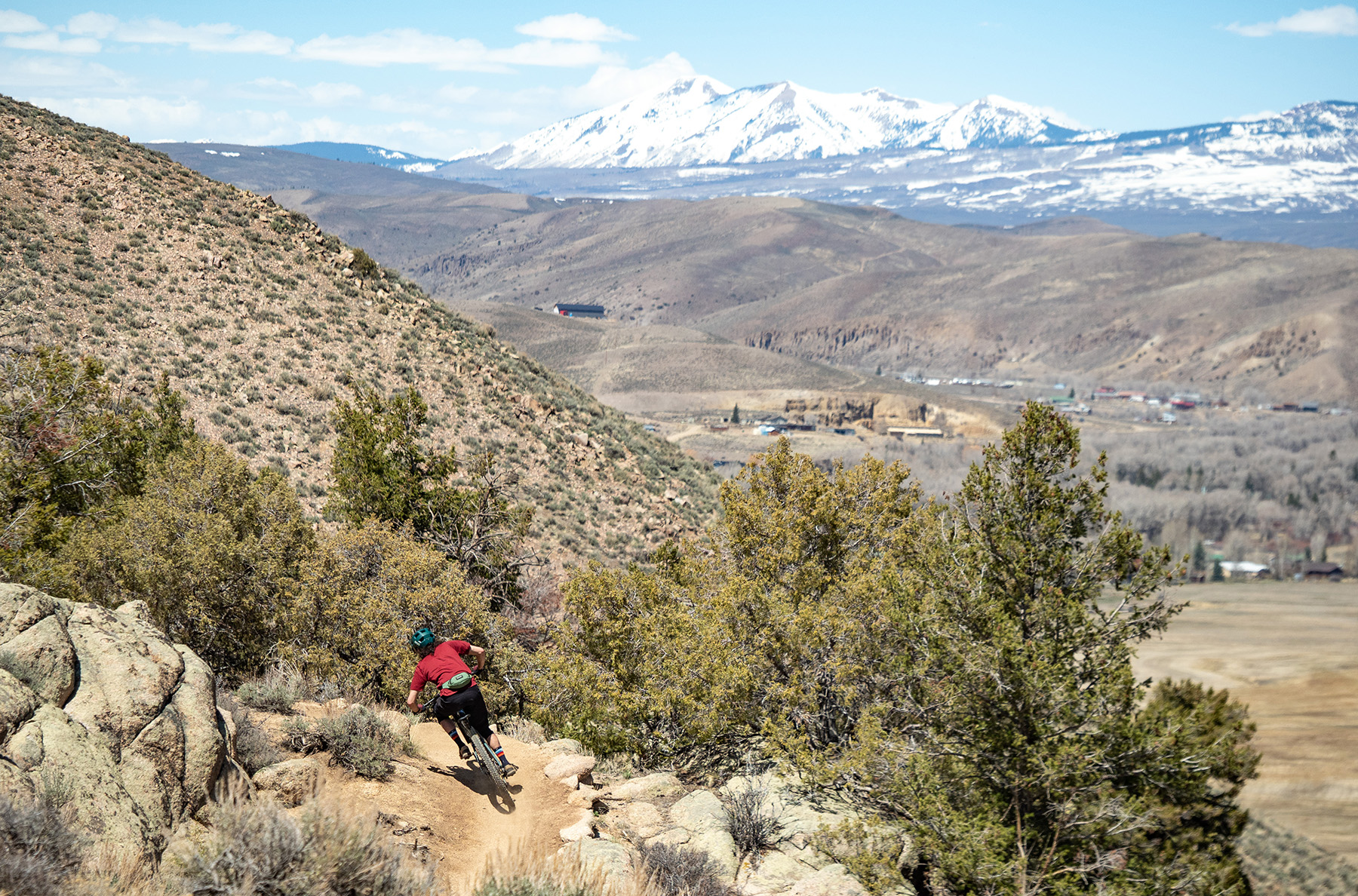
On the other hand, the Habit has a relatively long reach and moderately long chainstays — factors that usually indicate stability. While I would call the Habit a stable bike, it doesn’t have a very plush feel on the trail. Rather, the Habit has a big sweet spot that allows you to situate your weight in between the wheels and let the bike handle the terrain under you. That stability does come with some downsides; on very steep, rough trails, the Habit can bounce around a bit and make it difficult to maintain control. But with a slightly more active, precise approach, the Habit can handle impressively rowdy trails. Just don’t expect it to feel like an Enduro bike.
Rather, I found the Habit most at home on more flowy trails with rollers, berms, and jumps. Even without these manmade features, the Habit encouraged me to take a more playful approach, looking for small gaps and transfers rather than plowing right through everything. It corners really well, generates plenty of speed when pumping, and provides a responsive feel overall, allowing the rider to be in tune with the trail. It’s surprisingly good at jumping, and despite being pretty long, it handles steep dirt jumps quite well.

While the Habit’s suspension doesn’t excel at smoothing out small and medium bumps, it does handle big impacts and G-outs well for its class. I had a hard time finding the bottom of the Habit’s usable travel, even when overshooting big jumps or landing large drops. All in all, the Habit proved to be a really responsive and playful Trail bike.
The Build
Cannondale packs a lot of value into the $5,500 Habit Carbon 1 build that we tested, with some interesting spec choices that underline the Habit’s purpose as a more efficient and playful Trail bike. The first thing I noted was the inline RockShox Deluxe Select+ shock out back. In this category, manufacturers regularly spec both inline and piggyback shocks, but the Deluxe shock on the Habit definitely helps create a more lively, responsive suspension feel. At 140 mm of fork travel, both the RockShox Pike and Lyrik are reasonable candidates, but Cannondale opted for the lighter RockShox Pike Select+ fork, saving some weight and sacrificing some stiffness. To me, both of these suspension choices are perfectly reasonable and helped define the Habit’s character on the trail.
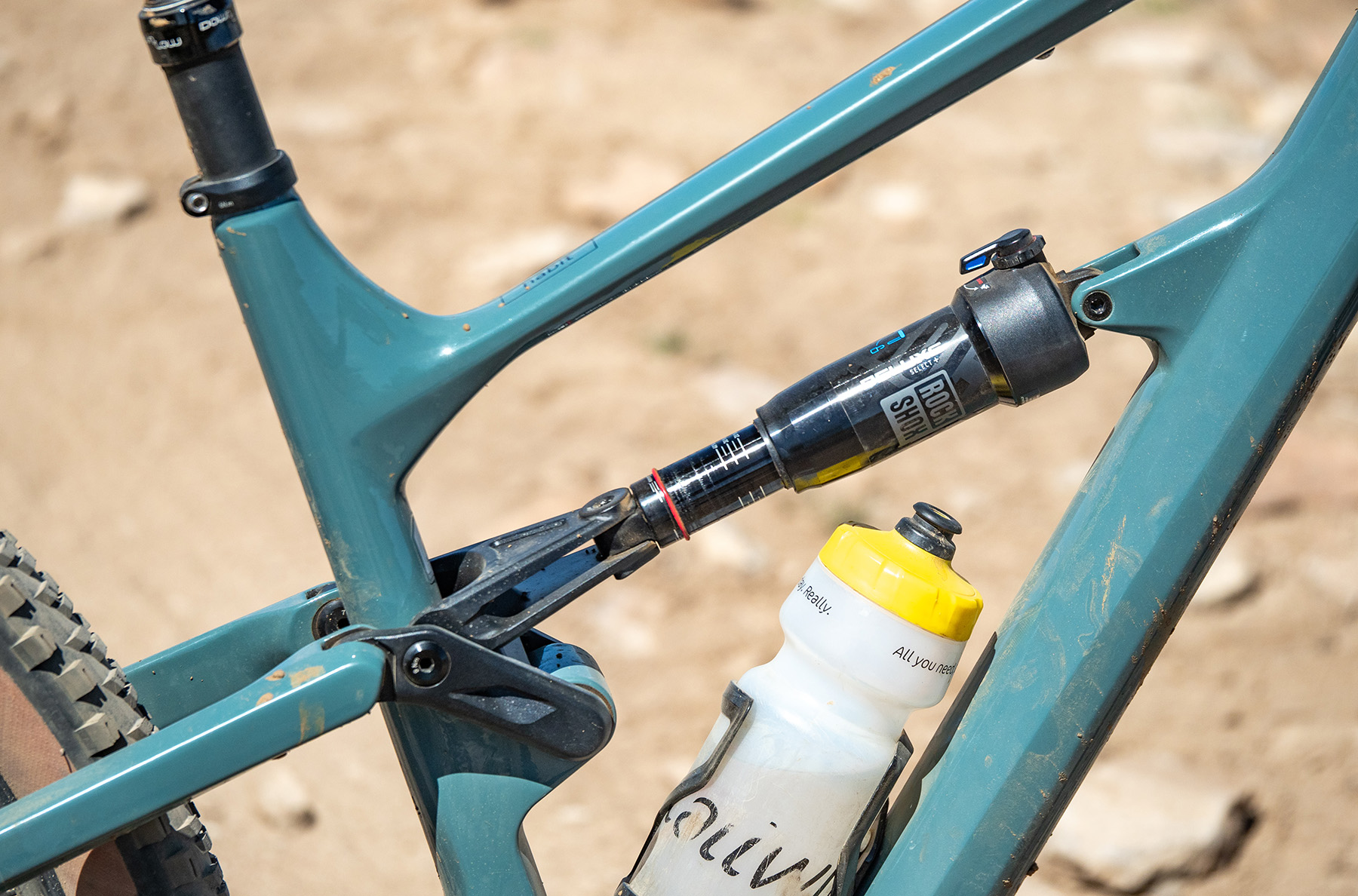
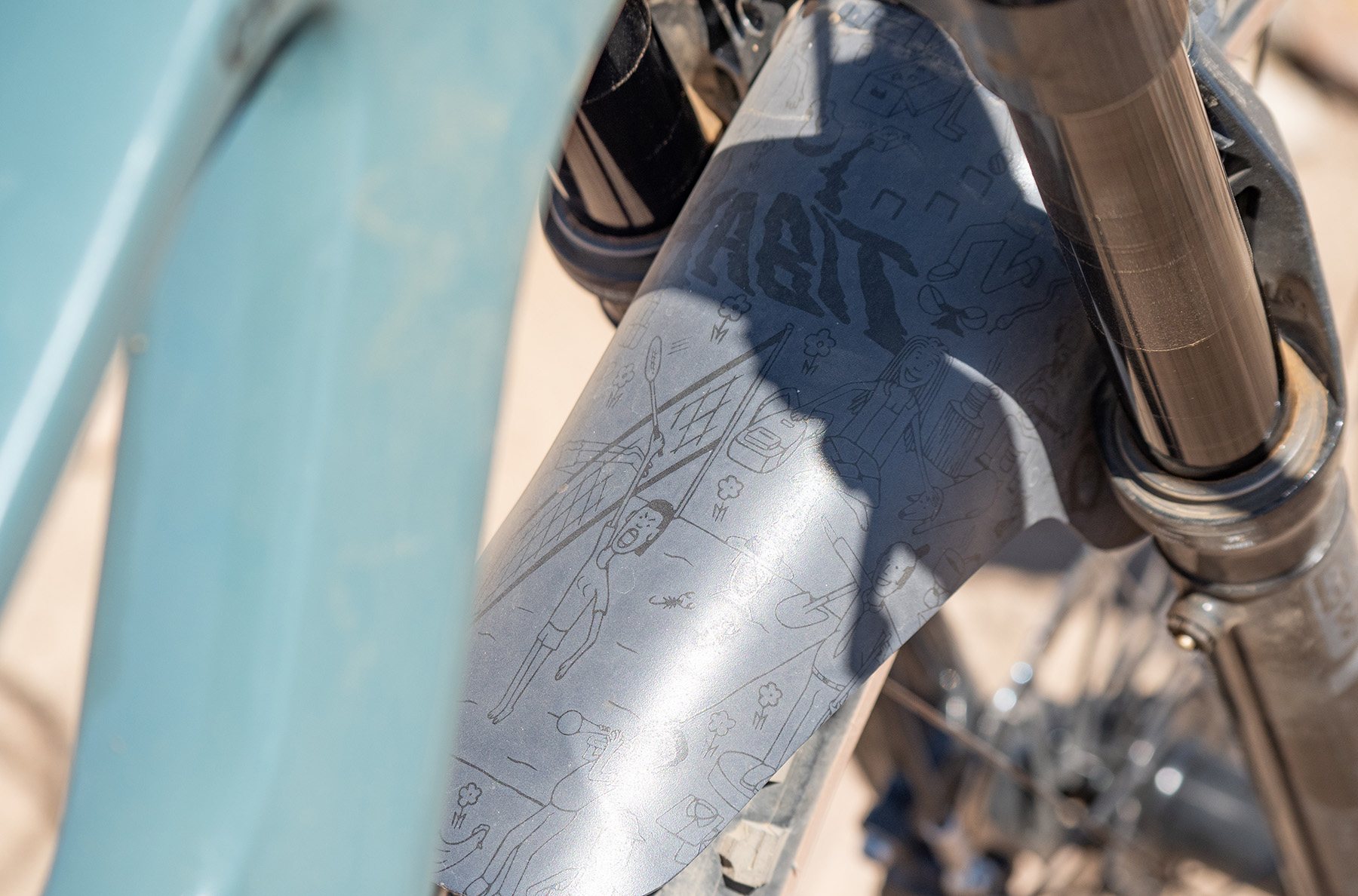
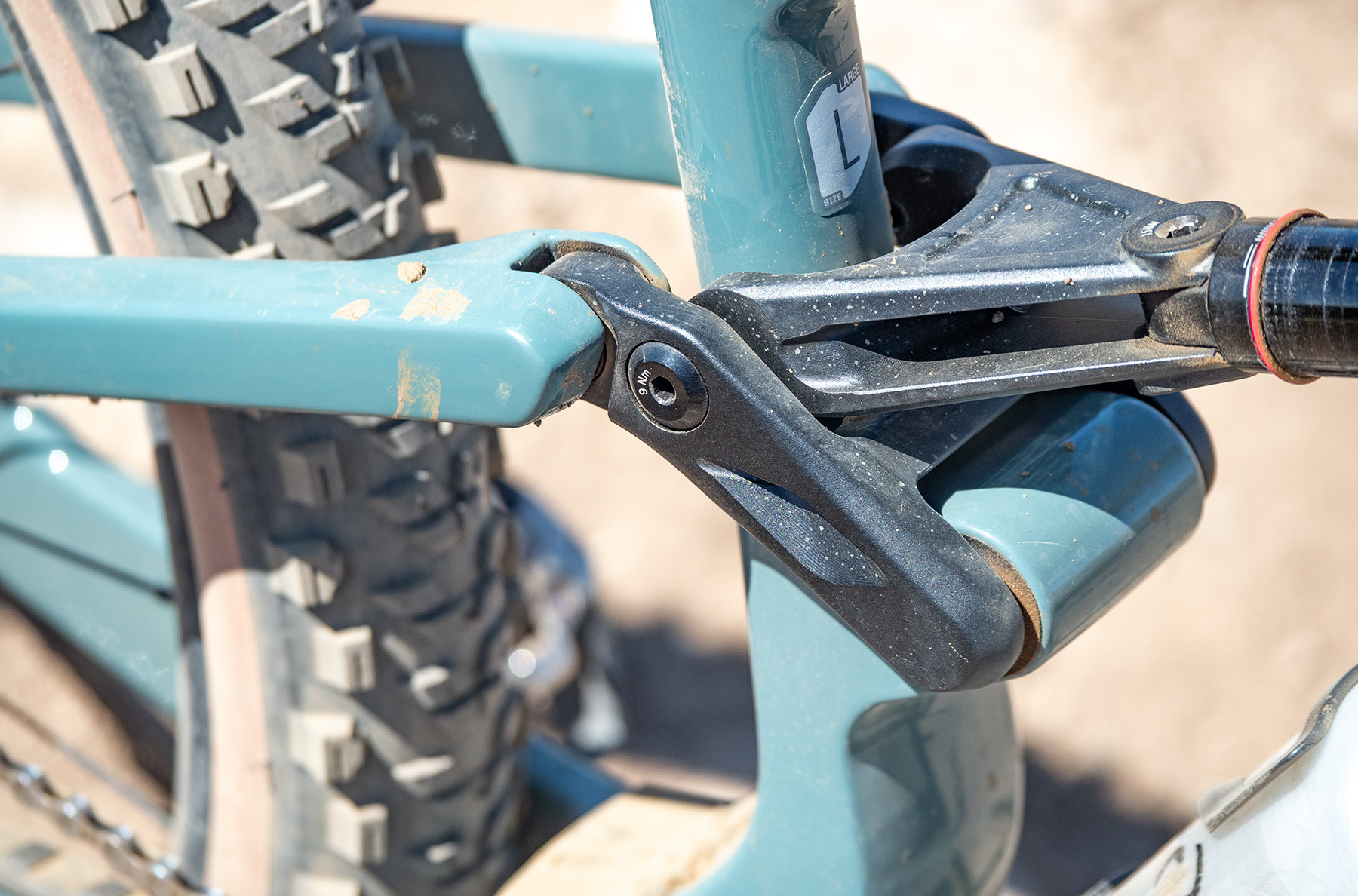

The SRAM GX Eagle drivetrain performed just fine and required no adjustments over my testing period. My experience with SRAM G2 R brakes has been pretty hit-or-miss, but the particular pair on this Habit treated me well. I don’t think it would make much sense to put a more powerful brake on the Habit without also speccing some grippier tires. Speaking of which, I did appreciate the fast-rolling Maxxis Dissector / Rekon tire combination that complemented the Habit’s efficient feel. Folks who ride wet and/or loose conditions could certainly squeeze some more grip out of the Habit with beefier tires, though.
Who’s It For?
Riders looking for a Trail bike that is more responsive and lively than it is plush and composed. The Habit is a really playful Trail bike that rides best when ridden with a more active and dynamic style. It feels most at home on flowy and fast singletrack, though it doesn’t feel completely restricted to non-technical terrain. It strikes a really even balance between climbing and descending prowess, too. Folks who like to get in the air, push into corners, and feel tuned in to the trail under them ought to consider the Habit as their next Trail bike.
Bottom Line
In a class full of Trail bikes that are trying to do everything well, the Cannondale Habit stands out as an unapologetically playful bike. While there are other bikes in this class that handle rougher, more technical trails better, the Habit is a great tool for taking a more precise approach to dissecting trails.
Deep Dive Comparisons
BLISTER+ members and those who purchase our Digital Access Pass can check out our Deep Dive comparisons linked below. Get our Digital Access Pass to view all our Deep Dives and Flash Reviews, or become a BLISTER+ member today to get access to that and a LOT more, including the best worldwide Outdoor Injury Insurance, exclusive deals and discounts on skis, personalized gear recommendations from us, and much more.
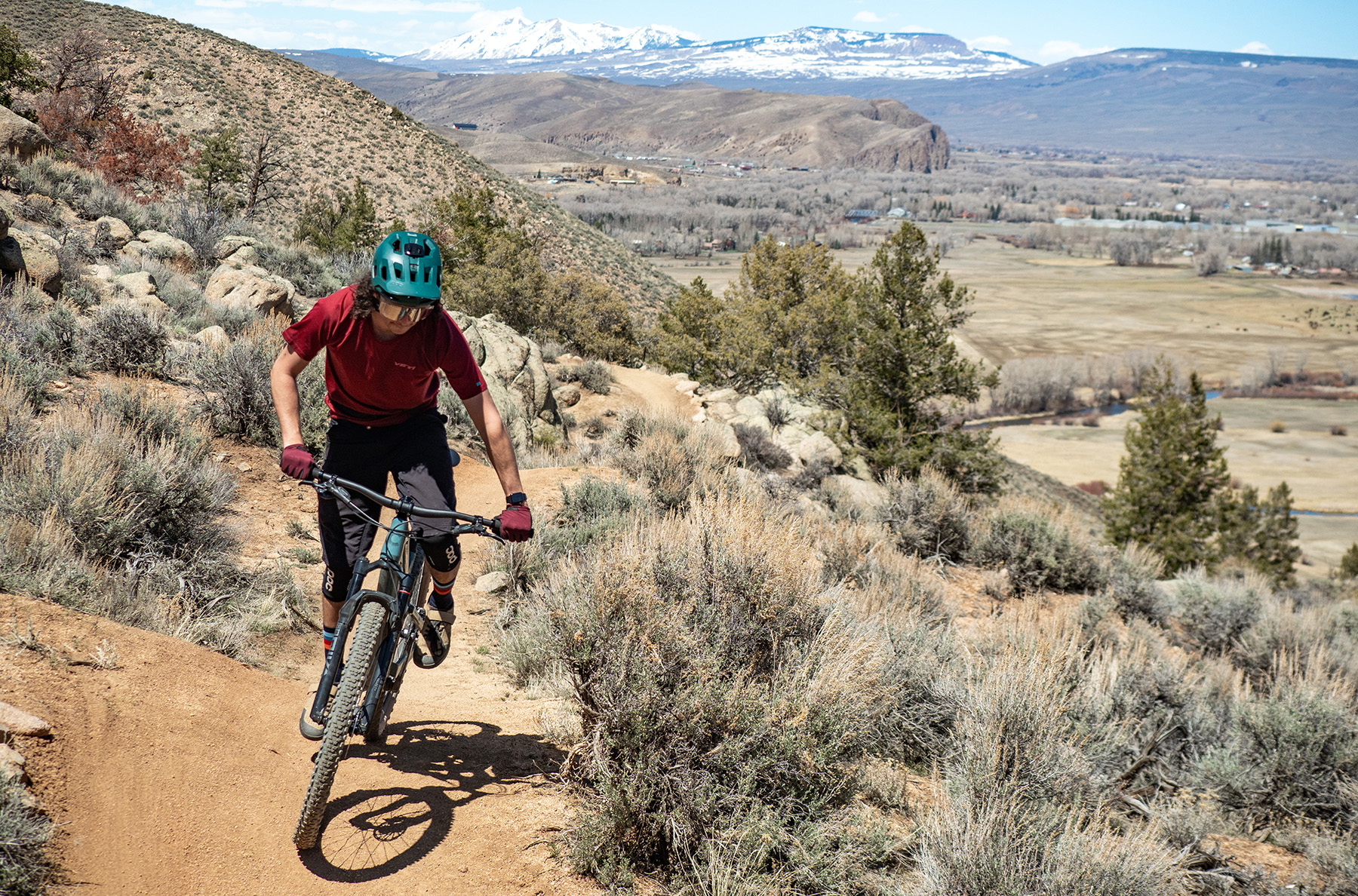
Deep Dive: Cannondale Habit
We compare the Cannondale Habit to the Pivot Trail 429 Enduro, Niner JET 9 RDO, Yeti SB120, Esker Rowl, Commencal T.E.M.P.O., Trek Fuel EX, and Santa Cruz Hightower.
Blister’s Flash Reviews and Deep Dives are accessible to those who purchase one of our paid subscriptions
To get our comprehensive Deep Dives and our initial, unfiltered reports on new gear, become a member and receive many other services, deals, and discounts.
If you’re already an active member, please log in.
(If you’re already logged in and a member in good standing and seeing this message in error, please refresh this page in your browser.)

Sounds like an excellent bike for us folk in the Midwest!